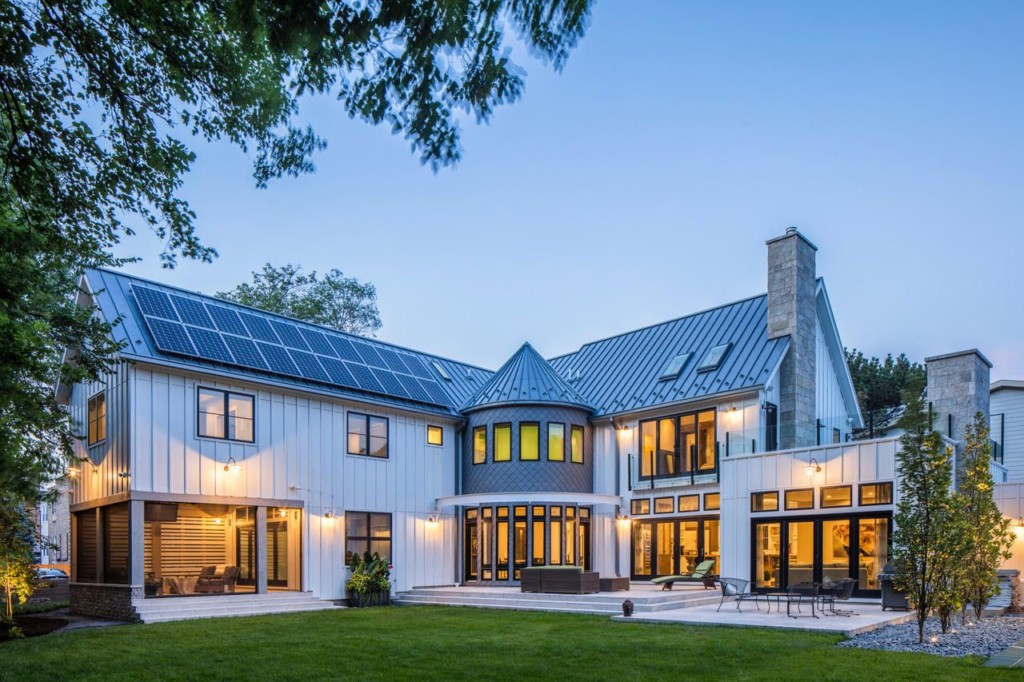How we use our homes has changed a lot in the past year. As we’re spending more time at home, we’re also realizing the need to live in an environment designed for health, wellness and well-being. Several elements of home design can provide peace of mind for a more healthful, resilient lifestyle.
Resiliency

Resilience is the ability of your home to withstand natural or manmade impacts and recover quickly. Smart choices in windows, exterior materials and roofing can help improve your home’s resilience.
Ice and water shields can be installed under the roof to keep your home watertight, even if high winds damage the roof. Oversized gutters and downspouts can help manage extreme rain events. Smart landscaping absorbs intense rain and prevents water from pooling around your home’s foundation.
In addition to exterior features, multiple sump pumps on carefully sized battery backup systems help keep basements dry. Food security and storage are part of a resilient home base, too. Grow your own vegetables organically and store necessities like water, nonperishables and other household goods in a dedicated storage space within your home.
Power Security

Reducing reliance on the grid provides peace of mind if and when conventional power systems go down, especially when that grid is stressed during severe storms and other critical weather events. When combined with a battery backup system, solar photovoltaic panels can provide a portion of your home’s power, generating electricity for running “mission critical” components including mechanical systems, water heaters, cooktops and other key appliances.
If you don’t have solar panels on your roof, electricity can be generated by renewable power purchased from the retail electric market. A battery backup system stores electricity from solar panels that can be used at night or if the power goes out. You can get the full benefits of a battery backup system, even without solar panels, because batteries store grid power and use it when needed.
Air Quality
Efficient air intake is an important aspect of air quality. High-performance homes are generally extremely tightly constructed. Within them, outside air can be brought in through a high efficiency air-to-air heat exchanger combined with a HEPA grade air filter. A HEPA filter removes at least 99.97 percent of particles that are 0.3 microns in size.
A home that is all electric also has many upsides – particularly no combustion emissions, which helps boost air quality. Using an electric induction cooktop, for example, is a great way to have an amazing cooking experience with zero indoor emissions.
Smart home technology systems monitor indoor air quality and temperatures, while smart lighting mirrors a person’s circadian rhythms for regulating sleep-wake cycles. During the year’s warmer months, operable architectural skylights provide natural ventilation that improves air circulation and reduces reliance on air conditioners. Additionally, skylights provide natural light, which also regulates circadian rhythms and enhances cognitive function.
Committing to using non-toxic materials contributes to healthier indoor air, as well. Such materials include: construction materials and finishes; furniture; clothing; and consumer goods like perfumes and haircare products.
Water Quality

Water quality is integral to your health and well-being, and there are many ways to improve it. Home water filters are a great way to make sure your drinking water is safe and healthy.
A rainwater capture system channels water for irrigation, yard work and other non-drinking uses.
Whether you’re building new or remodeling, consider features that provide your home with resiliency, while also helping the planet. The changing world requires thoughtful attention to health and wellness at the address we call home.
Nathan Kipnis is the founder and principal of Kipnis Architecture + Planning in Boulder, Colorado, and Evanston, Illinois. A founding member of NextHaus Alliance, Kipnis was recently appointed to serve on the American Institute of Architects’ highest-ranking national committee on sustainability and architectural design.
